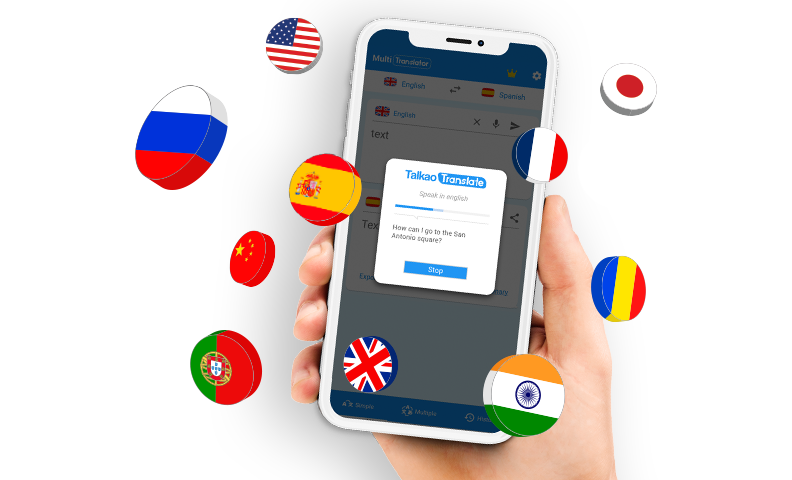
Nowadays, it’s not uncommon to find yourself needing to write an email in another language. There are countless reasons why you might have to send an email to someone who doesn’t speak your native language. However, despite how common this is, many doubts still arise when composing an email in a foreign language. You might ask yourself:
- How should I address someone according to their culture?
- Should I use a formal or informal tone?
- How can I ensure correct spelling and grammar?
These are frequent concerns that can’t always be solved by a simple translator or your email platform’s built-in tools. That’s why today, we’re bringing you a complete guide on how to write an email in another language. You’ll learn key structural tips, the proper way to address your recipient, subject line strategies, and much more.
So, grab a pen and paper, because this is going to be one of the best lessons to improve your communication skills!
Common mistakes when writing an email in another language
It might seem odd to consider writing an email in another language an important topic. You might think that this doesn’t matter anymore, since most email platforms offer automatic translation. Plus, if your recipient doesn’t understand the email, they can always find a way to translate it themselves… Big mistake!
In many situations, an email in another language can make a huge difference. Without realizing it, you could make courtesy mistakes, misinterpret expressions, or even offend the recipient. Some phrases that are perfectly normal and common for you might be poorly received in another language.
Additionally, not all cultures communicate the same way in written correspondence. Let’s look at some common mistakes and how to avoid them.

Courtesy mistakes when addressing the recipient
For many cultures, there’s a significant difference between formal and informal writing. For example, in Spanish, particularly in Latin America and the Caribbean, using “usted” instead of “tú” is essential in formal communication. It’s used when addressing a person of higher authority or someone with whom you have no close relationship.
A similar concept exists in Japanese culture, where emails should follow Keigo, the formal version of Japanese. This polite form is used when communicating with elders, higher-ranking individuals, or strangers.
Although these formalities are slowly becoming less rigid, they remain important in many cultures. So, when writing an email in another language, keep these nuances in mind.
Titles and honorifics
In some cultures, it’s customary to use titles before a person’s name. For example:
- In Spanish, you’ll find “Señor” (Mr.), “Señora” (Mrs.), “Don,” and “Doña”.
- In French, terms like “Monsieur” (Mr.), “Madame” (Mrs.), and “Mademoiselle” (Miss) are commonly used.
- In English, “Mr.,” “Miss,” and “Madam” often accompany formal communication.
These titles are not just meaningless formalities. In many cultures, omitting them can be seen as disrespectful or overly casual.
Additionally, in many Latin American countries, professional titles like “Ingeniero” (Engineer), “Licenciado” (Graduate), or “Doctor” (Doctor) are frequently used in formal speech. Similarly, in the U.S., omitting academic titles like “MD” or “PhD” can be perceived as impolite.
Colloquialisms and regional expressions
This mistake doesn’t just happen when writing in another language—it’s also easy to do in your native tongue. Words and expressions that are common and natural in your region might be unknown—or worse, offensive—elsewhere.
That’s why it’s best to use neutral language, especially in formal emails and professional settings. Avoid slang and idioms, as they can cause translation errors or misunderstandings.
Abbreviations, acronyms, and technical terms
Many people use abbreviations and acronyms in workplace communication. However, when writing an email in another language, it’s best to avoid them.
Abbreviations are easy to understand for those familiar with them, but for non-native speakers, they can be confusing. The same applies to phonetic abbreviations and shortened words, which can lose meaning in translation.
A common mistake in professional emails is using technical jargon without considering if the recipient understands it. Before including industry-specific terms, ask yourself:
- Does my recipient know these terms?
- Will translation affect the meaning?
Similarly, avoid foreign words in formal communication. Instead, try to find a clear and universally understood synonym.
Length, grammar, and structure
This doesn’t just apply to emails in another language—it applies to all emails! When writing, think about your reader:
- Do they have time to read a lengthy email?
- Will they only scan the first few lines before deleting it?
Some cultures, like English- and Chinese-speaking ones, value concise and direct communication. In these languages, being brief is appreciated, so concise emails tend to be more effective.
Additionally, grammar and spelling are crucial in formal emails. Poor grammar can hurt your credibility and even cause embarrassment.
Now That You Know the Mistakes… Let’s Take Action!
By avoiding these common pitfalls, you’ll improve your ability to write effective emails in another language. Ready to take your email writing skills to the next level? Let’s dive into the best strategies next!
How to properly write an email in another language?
By now, you’ve probably realized that we’re not talking about casual emails to friends or close acquaintances. We’re referring to formal emails, professional messages, or business communications that require extra care. These are the types of emails that can make a difference in your career. In these cases, proper etiquette matters—a lot!
For this reason, rather than relying entirely on automatic translation tools, you should pay attention to key details. Here are some essential tips to help you write effective emails in another language.
The subject line: Your email’s first impression
Most people don’t spend enough time crafting a subject line. However, this is one of the most crucial aspects of your email. Think of it this way: if your email were a billboard, the subject line would be its headline. A generic or uninteresting subject line increases the chances of your email being ignored.
To make your subject stand out, keep it:
- Short
- Clear
- Concise
- Engaging
Avoid using vague terms like “info,” “in the text,” or “greetings”, as they are likely to be overlooked. Instead, a compelling subject line that sparks curiosity is like adding neon lights to your message!
- Pro tip: Personalization matters! If possible, include the recipient’s name in the subject line. Seeing their name immediately grabs attention and makes them more likely to open the email. You can also use action-driven phrases that summarize the content while encouraging the recipient to engage.
Formatting the email body: Structure matters
Let’s talk about presentation, not content. In professional writing, this is known as “layout” or “formatting”. Think of it as dressing appropriately for an occasion—and in the case of formal emails, your text should be dressed to impress.
Even when writing an email in another language, presentation matters just as much as the words themselves. A long, unstructured block of text is difficult to read and often gets ignored. On the other hand, a well-organized email with clear paragraphs and logical structure is much easier to process—even if the content remains the same.
How should the email body be structured?
A formal email, no matter the language, follows a structure similar to a letter. Here’s how you should organize it:
- Salutation: Start by addressing the recipient properly. Examples:
- “Dear Mr. Smith,”
- “Your Excellency Dr. Taylor,”
- “Dear Ms. Johnson,”
- Opening Paragraph (Introduction): Write a short, two-line introduction to summarize the purpose of the email. Many experts recommend giving a quick overview so the reader understands the main point at a glance.
- Main Body (Core Message): This section should include one or two concise paragraphs.
- Keep each paragraph 5-6 lines long.
- Don’t overload the email with unnecessary details.
- Call to Action (Closing Paragraph): End your email by clearly stating what the recipient should do next.
- Provide your contact details.
- Request an action (e.g., “Please review the attached document”).
- Politely thank the reader for their time.
Attachments, images, and other elements
Many emails in another language include attachments such as documents, videos, or images. However, attaching files requires proper formatting and organization.
- Use clear, descriptive file names: For example, a file named “gt_6641_huy.exe” is meaningless. Instead, name it “Service_Contract.pdf” to indicate its content.
- Compress files whenever possible: Large files can slow down downloads or even be ignored. Use common file formats and compression tools to make them easier to open.
By following these recommendations, you’ll avoid common mistakes and make sure your emails in another language are clear, professional, and effective. Now, let’s move on to what matters most…

How to translate an email into another language?
Translating an email into another language is no small task. It can mean the difference between a well-written message and one that ends up in the trash folder. In some cases, a poor translation can have serious consequences, especially if the email is related to a job opportunity or an important matter. That’s why knowing how to properly translate an email is essential.
There are many translation options available today. But not all of them guarantee accuracy.
Online translation tools: Are they reliable?
There are dozens of translation websites, many of them free and easy to use. The process is simple:
- Copy your text.
- Paste it into the tool.
- Get an instant translation.
Sounds easy, right? The problem isn’t the process—it’s the accuracy of the translation.
Using random translation tools can be like betting everything on a single number in roulette. Sometimes you’ll get lucky, and the translation will be grammatically correct and well-structured. But… What if the tool generates an inaccurate, error-filled translation that distorts the meaning of your email?
To avoid these issues, follow these recommendations when translating an email.
Choose high-quality translation tools
Most apps and online tools have user ratings and reviews. The highest-rated options often provide the best results.
- Check the app’s rating before downloading it: Read user reviews—people rarely leave positive feedback, but they won’t hesitate to write complaints if the tool is unreliable.
- Look for professional recommendations or trusted sources.
Prioritize accuracy in grammar and spelling
Not all translation tools focus on proper grammar and spelling. Many closed-system or open-source translators are prone to errors, as developers don’t always invest enough time in refining linguistic accuracy.
- Test the tool: Translate a well-known phrase.
- Compare already translated texts with the tool’s version.
- If you spot too many mistakes, look for a better option.
Look for advanced features and extra resources
When translating an email into another language, it’s best to use tools that offer more than basic translations. Some tools, like Talkao Translation apps, provide integrated features that enhance translations:
- Talkao Text Translator: Offers precise, real-time translations.
- Talkao Dictionary: Includes thousands of definitions, synonyms, and contextual examples to improve word choice.
- Multi-language support: Translates into over 100 languages with extensive vocabulary.
- Document Translator: Converts text from different alphabets and even translates text within images—an essential tool for enhancing email accuracy.
- Cross-device compatibility: Works on Android and iOS, making it easy to translate an email or any other document anytime, anywhere.
Translating an email into another language is not just about word conversion—it’s about accuracy, clarity, and professionalism. By using reliable tools, verifying grammar, and leveraging advanced features, you can ensure your translated emails maintain their intended meaning and impact.









Newsletter